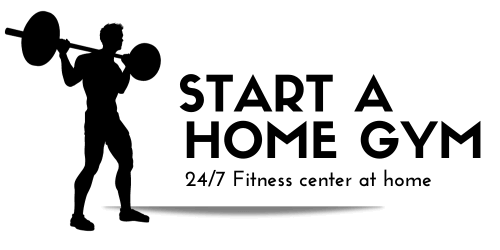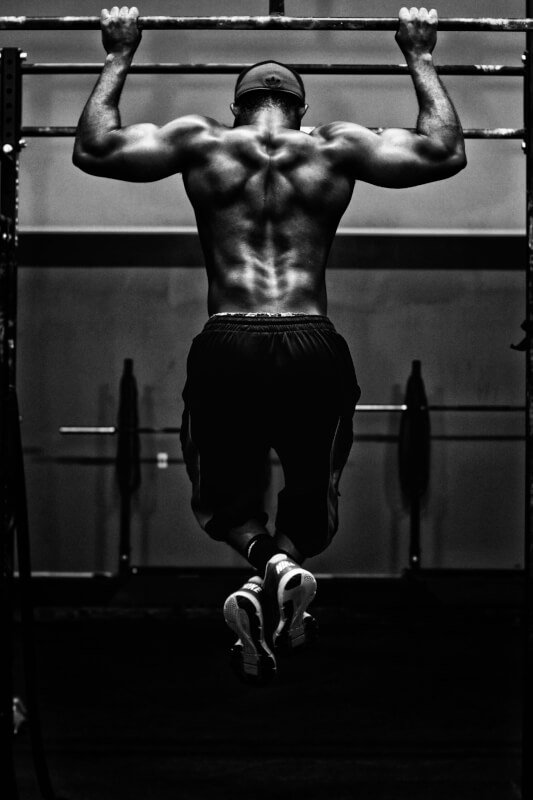So, you’ve decided to take the plunge and set up your very own DIY home gym. Congratulations! Making the choice to bring the gym to your own doorstep is a fantastic way to prioritize your fitness, save time and money, and ensure that your workouts fit seamlessly into your busy schedule. But where to begin? This beginner’s guide is here to provide you with all the essential tips, tricks, and insights you need to create a personalized workout space that will help you achieve your fitness goals and make every workout a rewarding and enjoyable experience. From selecting the right equipment to optimizing your space and creating a motivating atmosphere, we’ve got you covered every step of the way. Let’s dive in and get you started on your fitness journey right at home!
Choosing the Right Space
Assessing Available Space
When setting up a DIY home gym, the first step is to assess the available space in your home. Look for a room or area that is spacious enough to accommodate your fitness equipment and allows for comfortable movement during workouts. Consider clearing out any unnecessary furniture or items to make more room for your gym setup. Make sure to measure the dimensions of the space so that you can accurately plan the layout of your gym.
Considering Noise and Vibration
Another important factor to consider when choosing a space for your home gym is the level of noise and vibration that may be produced during workouts. If you live in an apartment or have neighbors close by, it’s crucial to select a space where noise can be minimized. Opt for a room with thick walls or consider soundproofing the walls to prevent disturbances. Additionally, choose flooring materials that can absorb vibration, such as rubber mats, to minimize the impact on neighboring rooms.
Ensuring Proper Ventilation
Proper ventilation is essential for any workout space, even in a DIY home gym. Good airflow can help regulate temperature and prevent the buildup of unpleasant odors and moisture. Choose a space with windows that can be opened for fresh air circulation. If windows are not available, consider installing a ventilation system or using fans to keep the air flowing during workouts. Remember, a well-ventilated gym will create a more comfortable and enjoyable environment for your fitness routine.
Setting Budget and Goals
Determining Your Budget
Before diving into setting up a DIY home gym, it’s crucial to determine your budget. Take some time to evaluate how much you are willing to invest in your fitness equipment and gym setup. Consider your long-term fitness goals and commitment to working out at home. Having a clear budget in mind will help you make informed decisions when choosing equipment and planning your gym layout.
Defining Your Fitness Goals
Next, define your fitness goals. What do you want to achieve with your home gym? Are you looking to build muscle, lose weight, improve cardiovascular fitness, or simply maintain your overall health? Understanding your goals will guide you in selecting the right equipment that aligns with your fitness aspirations. Whether your focus is on strength training, cardio, or a combination of both, having clarity on your objectives will make your DIY home gym more effective.
Researching Equipment Costs
Once you have figured out your budget and fitness goals, it’s time to research equipment costs. Look for high-quality and durable fitness equipment that fits within your budget range. Compare prices from different retailers to find the best deals, and read reviews from other users to ensure you are investing in reliable and safe equipment. Remember, it’s better to invest in quality equipment that will last longer and provide better performance rather than settling for cheaper options that may compromise your safety and results.
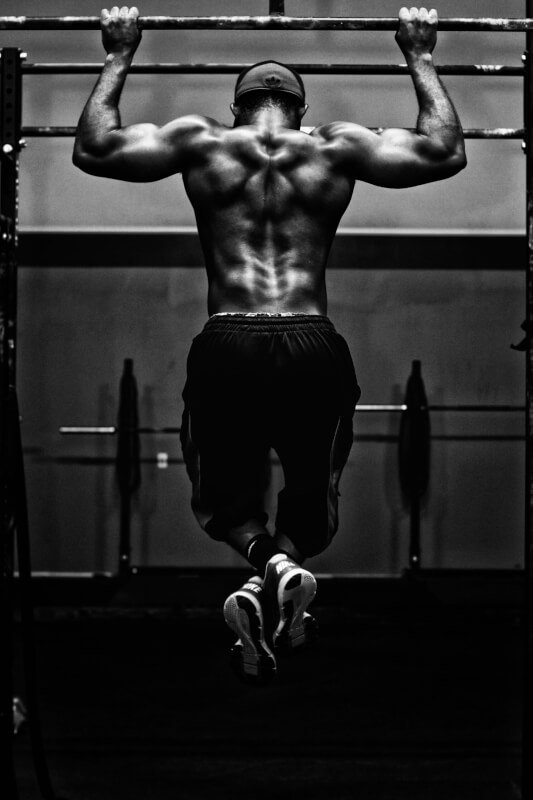
Selecting Essential Equipment
Starting with Basics: Dumbbells and Resistance Bands
When selecting equipment for your DIY home gym, it’s important to prioritize the basics. Dumbbells and resistance bands are versatile and essential tools that can be used for various exercises and target multiple muscle groups. From strength training to rehabilitation exercises, these simple yet effective pieces of equipment can provide a full-body workout. Choose a range of dumbbell weights that suit your fitness level, and opt for high-quality resistance bands with different resistance levels for added variety in your workouts.
Considering Cardio Machines
Cardiovascular exercise is a key component of any fitness routine, and having cardio machines in your DIY home gym can provide convenient options for getting your heart rate up. Treadmills, elliptical trainers, stationary bikes, and rowing machines are popular choices that can help you improve your cardiovascular fitness from the comfort of your home. Consider your preferences and space availability when selecting cardio machines, and opt for equipment that provides adjustable resistance levels and training programs to keep your workouts challenging and engaging.
Exploring Additional Equipment
While dumbbells, resistance bands, and cardio machines serve as the foundation of your home gym, exploring additional equipment can add variety and target specific muscle groups. Consider including a stability ball for core strengthening exercises, a pull-up bar for upper body workouts, or a suspension trainer for functional movements. If you are interested in weightlifting, a barbell and weight plates can be great additions. Research different types of equipment based on your fitness goals and preferences to create a well-rounded and versatile DIY home gym.
Designing the Layout
Optimizing Space for Different Activities
Designing an efficient layout is crucial for maximizing the functionality of your DIY home gym. Consider the different activities you will be performing and organize the space accordingly. Allocate separate areas for strength training, cardio exercises, and stretching. Place equipment that requires more space, such as cardio machines, in areas where movement is not obstructed. Remember to leave enough clearance between equipment to ensure safe and comfortable workouts.
Placing Equipment Based on Frequency of Use
When designing the layout of your DIY home gym, it’s important to consider the frequency of use for each piece of equipment. Place the equipment you use most frequently in easily accessible areas to avoid unnecessary movement and save time during workouts. For example, if you primarily use dumbbells and resistance bands, keep them near the center or front of the gym area. Less frequently used equipment can be placed towards the sides or corners of the space.
Creating Functional Zones
To further optimize your DIY home gym layout, consider creating functional zones. Designate specific areas for different types of exercises or training. For example, dedicate one corner for strength training with weights and machines, another corner for cardio equipment, and a separate area for stretching and floor exercises. This organization will allow for efficient transitions between exercises and create a more organized and functional space.
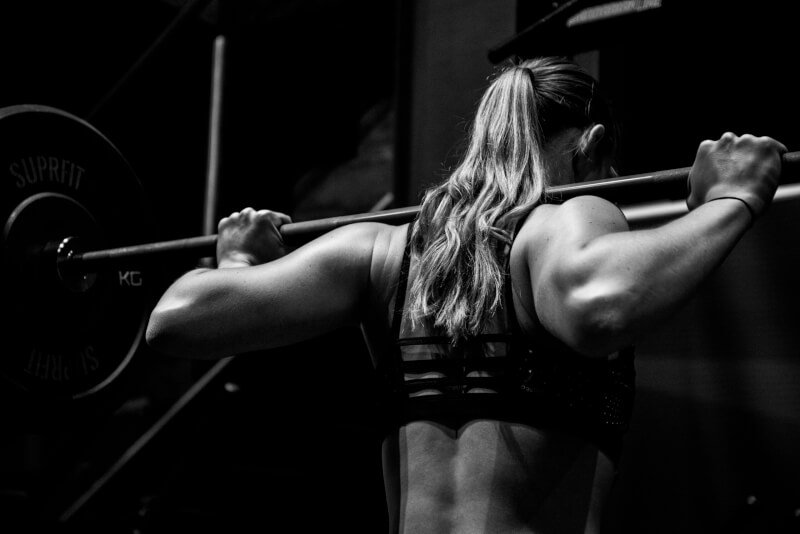
Safety Measures
Clearing the Area
Safety should be a top priority when setting up your DIY home gym. Clear the area of any obstacles, furniture, or objects that could hinder your movements or cause accidents during workouts. Ensure there is adequate space around each piece of equipment to allow for safe and unrestricted movements. Keeping the area clutter-free will minimize the risk of tripping or falling during your exercise routines.
Ensuring Proper Flooring
Choosing the right flooring for your DIY home gym is crucial for injury prevention and exercise performance. Opt for flooring materials that provide proper cushioning and shock absorption, such as rubber or foam mats. This will help protect your joints while performing high-impact exercises and reduce the risk of injury. Additionally, ensure that the flooring is non-slippery to avoid accidents. A safe and stable surface will provide a solid foundation for your workouts.
Securing Equipment for Stability
To prevent accidents and injuries, it is important to secure your equipment for stability. Ensure that all equipment is properly assembled and tightened, and check for any loose parts or components regularly. If necessary, use anchor points or straps to secure larger pieces of equipment, such as cardio machines or weight racks, to the floor or wall. This will prevent them from tipping over during intense workouts and add an extra layer of safety to your DIY home gym.
Lighting and Mirrors
Choosing Adequate Lighting
Proper lighting is essential for a safe and enjoyable workout experience in your DIY home gym. Choose lighting that is bright enough to illuminate the entire space and provide clear visibility during exercises. Natural lighting is ideal, so consider placing your gym near windows or using translucent curtains to allow natural light to fill the room. If natural light is not available or insufficient, install appropriate lighting fixtures, such as LED lights or bright ceiling lights, to ensure optimal visibility.
Installing Mirrors for Form Correction
Mirrors are not just for vanity; they serve an important purpose in a DIY home gym. Installing mirrors on one or more walls can help you monitor your form and technique during exercises. This visual feedback is especially valuable when performing exercises that require proper alignment, such as weightlifting or yoga. Mirrors allow you to see any imbalances or incorrect positions and make the necessary adjustments to maintain correct form, reducing the risk of injury and improving exercise efficacy.
Utilizing Natural Light
In addition to choosing adequate artificial lighting, it is important to utilize natural light in your DIY home gym. Natural light not only enhances the overall ambiance but also provides numerous mental and physical health benefits. Consider positioning your gym area near windows or glass doors to allow for ample natural light. The exposure to natural light can boost your mood, increase serotonin levels, and contribute to a more positive and energized workout experience.
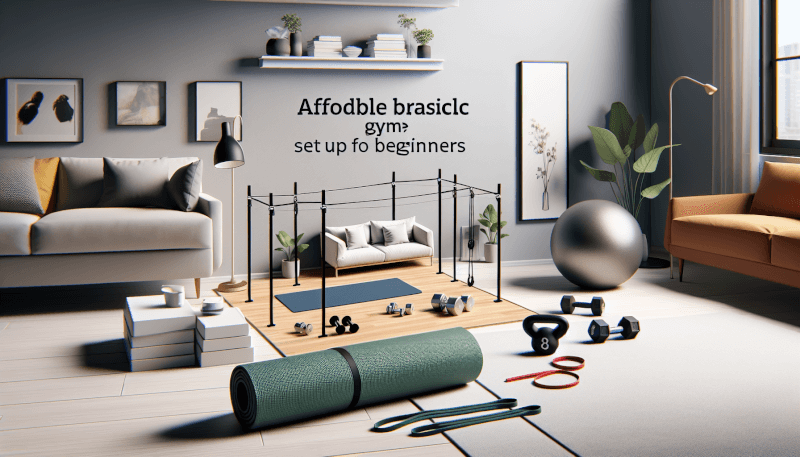
Storage Solutions
Organizing Equipment and Accessories
Properly organizing your fitness equipment and accessories is essential for a tidy and functional DIY home gym. Assign specific storage spaces for each item to prevent clutter and ensure easy accessibility. Use storage bins or baskets to keep smaller items, such as resistance bands, fitness balls, and yoga mats, organized. Hang jump ropes or stretch bands on hooks or pegboards to keep them tangle-free and easily visible. By having a designated storage system, you can maintain a clean and organized gym space.
Utilizing Wall Space with Hooks and Racks
To optimize storage in your DIY home gym, utilize the wall space with hooks and racks. Install sturdy hooks or racks on the walls to hang your dumbbells, kettlebells, or resistance bands. This not only keeps the equipment organized and off the floor but also adds a visual appeal to your gym. Remember to securely attach the hooks or racks and distribute the weight evenly to ensure proper support and prevent accidents.
Considering Storage Cabinets
For larger equipment or accessories that require more storage space, consider using storage cabinets in your DIY home gym. Cabinets can provide a sleek and organized way to keep items such as yoga mats, foam rollers, and weight plates out of sight when they are not in use. Look for cabinets with adjustable shelves or compartments to accommodate different sizes of equipment. This will allow you to maintain a clutter-free and visually appealing gym environment.
Adding Entertainment Options
Setting up a Music System
Adding entertainment options to your DIY home gym can make your workouts more enjoyable and motivating. Consider setting up a music system that allows you to play your favorite workout playlists. Invest in a good-quality sound system or portable speakers that provide clear and immersive sound. Music can boost your energy levels, distract from fatigue, and enhance your overall workout experience.
Incorporating a TV or Tablet
If you enjoy having visual entertainment during your workouts, consider incorporating a TV or tablet into your DIY home gym setup. Mount a TV on the wall or use a tablet stand to place it in a convenient location. This will allow you to watch workout videos, follow virtual training programs, or enjoy your favorite TV shows or movies while exercising. Just ensure that the screen is positioned at a comfortable height and does not obstruct your movements or distract you from proper form.
Creating a Motivating Atmosphere
Creating a motivating atmosphere in your DIY home gym can go a long way in keeping you motivated and consistent with your workouts. Consider decorating the space with motivational posters, inspirational quotes, or images that inspire you. Choose colors that are energizing and uplifting, such as vibrant shades of blue or yellow. Personalize your gym with elements that reflect your fitness goals and personal style. By surrounding yourself with a motivating environment, you are more likely to stay committed to your fitness journey.
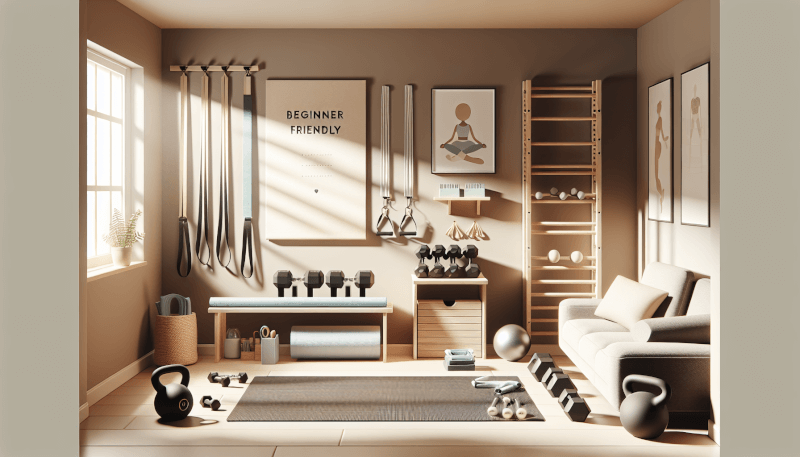
Maintaining and Cleaning
Regular Equipment Maintenance
To ensure the longevity and optimal performance of your fitness equipment, regular maintenance is crucial. Follow the manufacturer’s guidelines for cleaning, lubricating, and inspecting your equipment. Check for any signs of wear or damage and address them promptly to prevent accidents or equipment failure. Regular maintenance will not only prolong the lifespan of your equipment but also ensure safe and effective workouts.
Cleaning and Sanitizing the Area
Maintaining a clean and hygienic environment in your DIY home gym is essential for your health and well-being. Establish a cleaning routine that includes regular dusting, vacuuming, and wiping down surfaces. Pay extra attention to high-touch areas such as equipment handles, benches, and mats, as they may harbor bacteria or sweat. Use appropriate cleaning products or disinfectants recommended for gym equipment to keep your space clean and germ-free.
Storing Equipment and Accessories Properly
When your workouts are complete, it’s important to store your equipment and accessories properly. Wipe down any sweat or moisture from equipment surfaces before storing them to prevent damage. Return dumbbells, resistance bands, and other smaller items to their designated storage spaces. Ensure that larger equipment is securely put away to avoid tripping hazards or damage. By storing your equipment properly, you can maintain a clutter-free and safe DIY home gym.
Expanding Your Gym
Gradually Adding New Equipment
As your fitness journey progresses, you may find the need to expand your DIY home gym by adding new equipment. However, it’s important to do this gradually and intentionally. Consider the specific needs and interests that arise as you advance in your fitness goals. Research and invest in equipment that will complement and enhance your existing workouts. Purchasing equipment gradually allows you to maximize the value and effectiveness of each addition while ensuring your budget remains manageable.
Creating Variety with Workout Accessories
In addition to adding new equipment, workout accessories can provide you with a wide range of exercise variations and intensity levels. Consider incorporating accessories such as stability balls, foam rollers, medicine balls, or resistance tubes into your workouts. These accessories can challenge your muscles in different ways and keep your routines interesting and engaging. Experiment with different accessories to discover new exercises and ways to push your limits.
Considering Hiring a Personal Trainer
If you feel the need for professional guidance and personalized programming, consider hiring a personal trainer to help you make the most of your DIY home gym. A personal trainer can create customized workout plans based on your goals, provide proper form and technique guidance, and keep you accountable. They can also help you evaluate your progress, make adjustments to your routines, and offer valuable expertise to ensure you are exercising safely and effectively. Investing in a personal trainer can be a worthwhile step towards achieving your fitness goals.
Setting up a DIY home gym can be an exciting and rewarding venture. By carefully considering your space, budget, goals, and equipment selection, you can create a functional and personalized fitness haven within the comfort of your own home. Remember to prioritize safety, organization, and cleanliness to ensure a positive and effective workout experience. With dedication and the right resources, your DIY home gym will become a place where you can achieve your fitness aspirations and embark on a lifelong journey of health and wellness.
